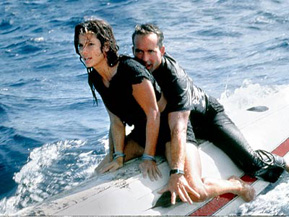|
|
Chapter TwoSpeed 2: Cruise ControlBy Brett Ballard-BeachAugust 18, 2011
Screenwriter Graham Yost was also making a debut of sorts, marking his first theatrically produced screenplay, having written for television before (Herman’s Head, The Powers That Be) and mostly since (From The Earth to the Moon, Boomtown). There was nothing to inherently suggest an action film of any merit, particularly one that would be rapturously reviewed, and that would catch on with audiences and hang around for most of the summer. But after debuting at #1 with about $14 million, Speed would go on to gross nearly 9 times that, finishing out with $121 million in North America and an impressive $350 million globally. Arriving almost three years to the day after the first film, Speed 2 had seen De Bont’s stock soar astronomically in the interim (thanks to a minor hit called Twister). For the sequel, he was director, producer and co-writer of the story (unlike Kevin Costner in that same year’s The Postman, he did not co-write and/or sing any of Speed 2’s closing credits songs). Randall McCormick and Jeff Nathanson are individually credited for the screenplay and while Nathanson moved on to Rush Hour, Men in Black, and Indiana Jones sequels, McCormick has direct-to-video sequels to The Scorpion King and Blue Crush to his credit.
|

|
|
|

|
Friday, November 1, 2024
© 2024 Box Office Prophets, a division of One Of Us, Inc.


